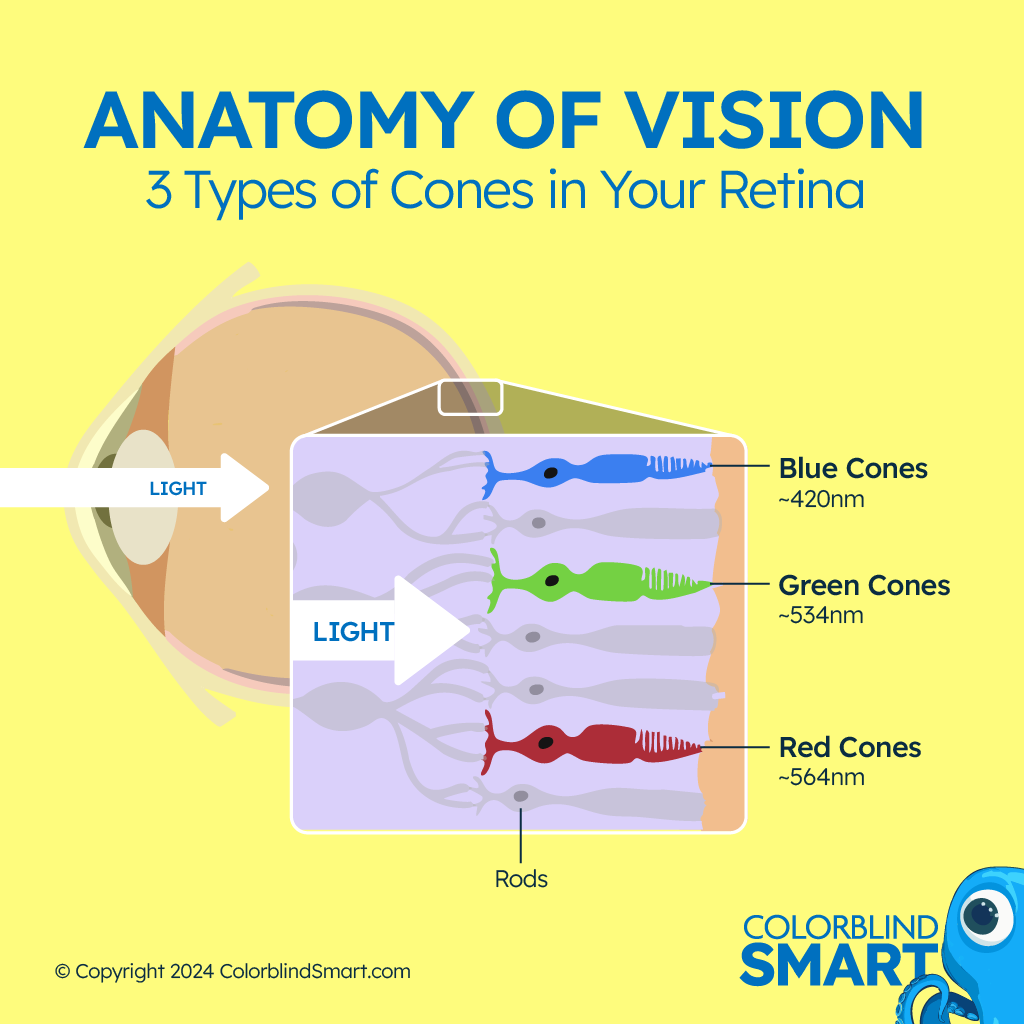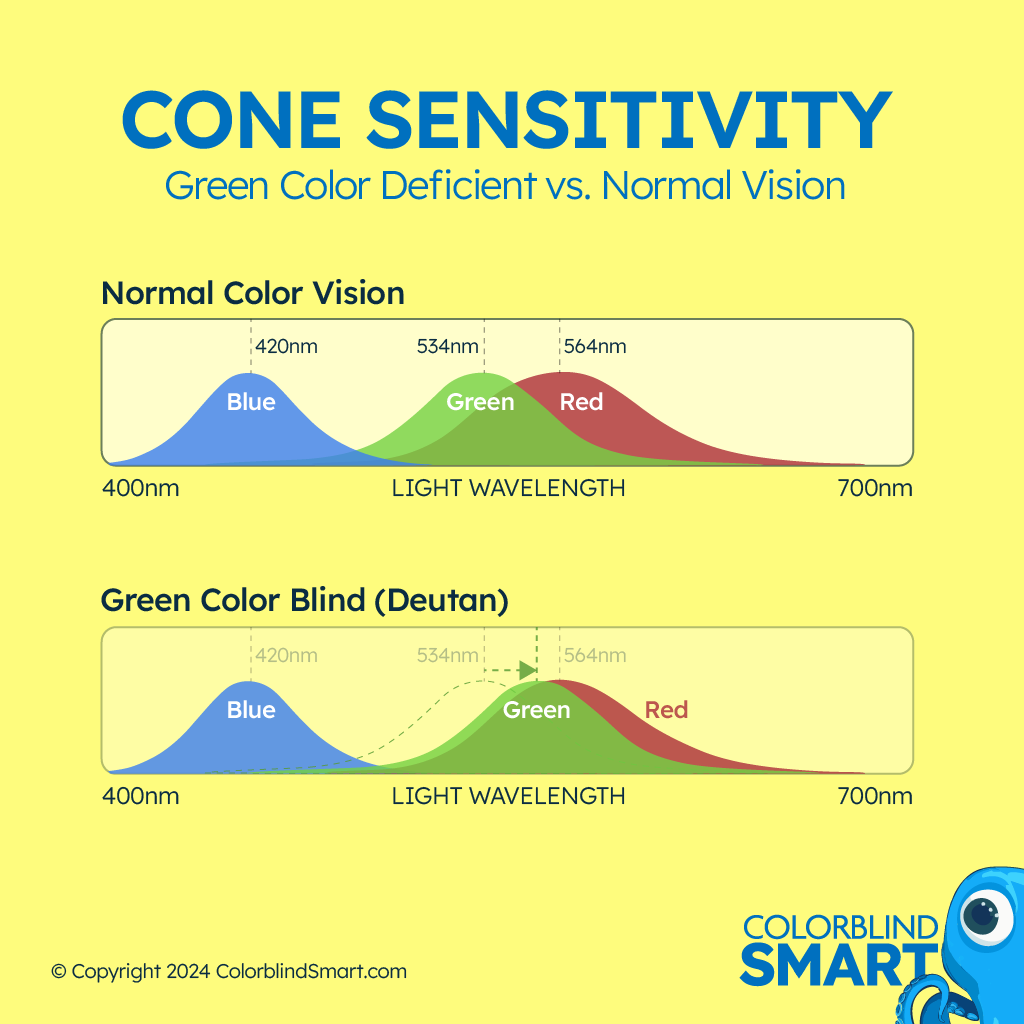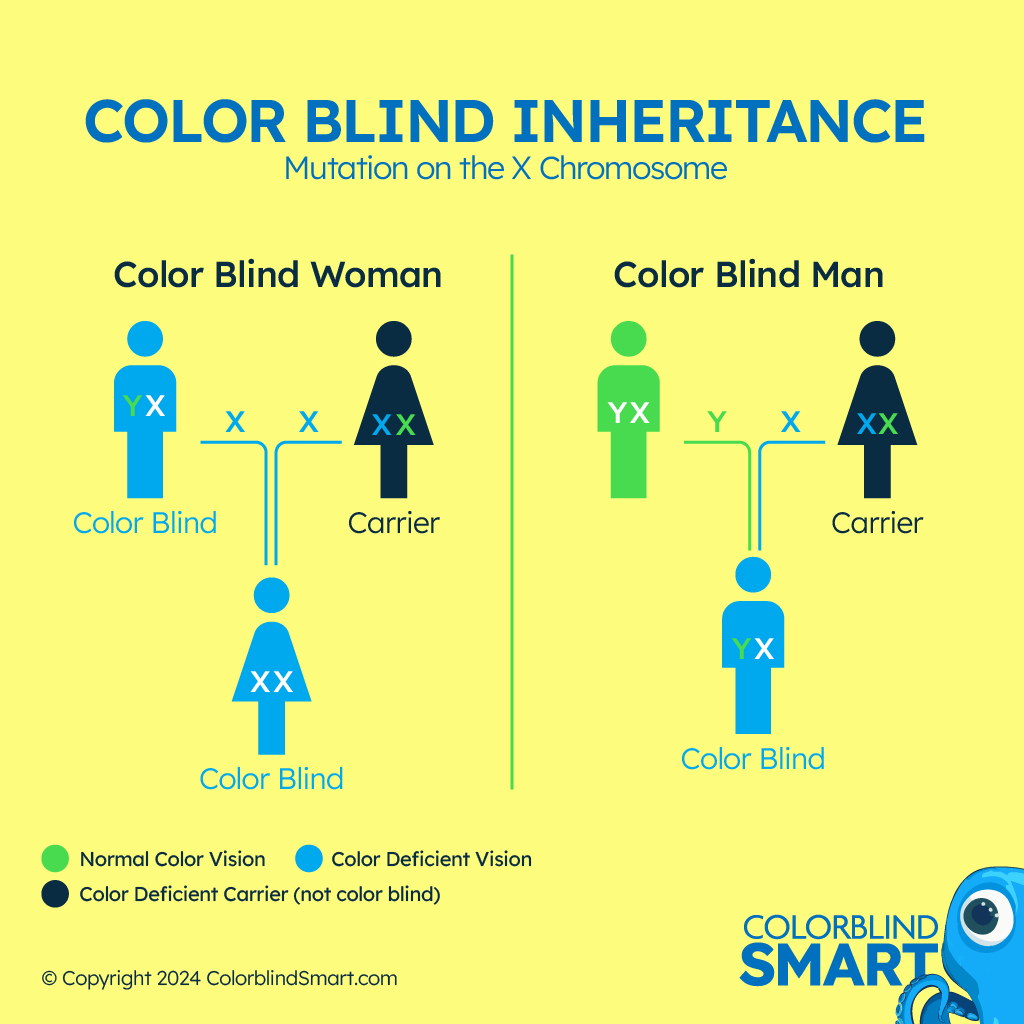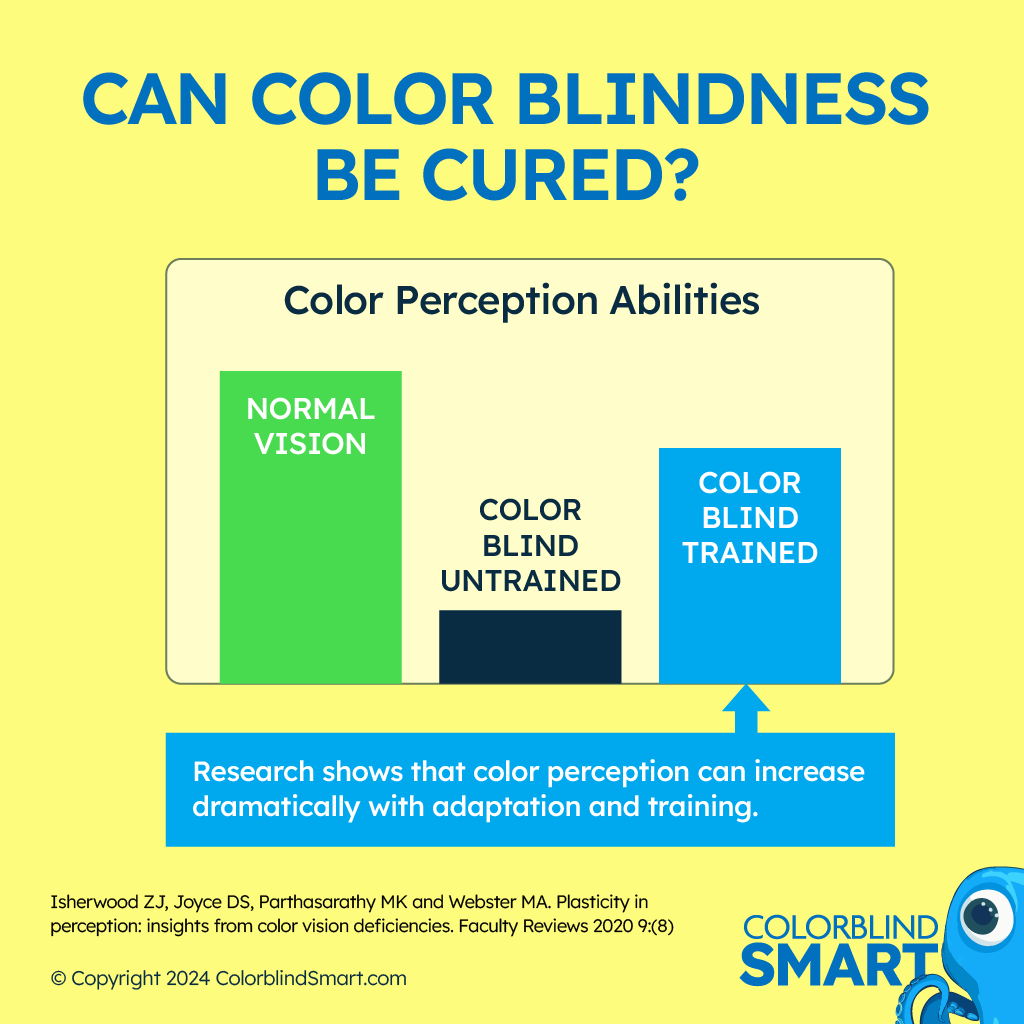If someone is color blind which structure is malfunctioning?
When people ask, “If someone is color blind, which structure is malfunctioning?” the quick answer points directly to the cone cells in the retina.

These specialized photoreceptors are responsible for detecting different wavelengths of light, enabling us to experience the vivid range of colors in our world. When one or more types of cone cells malfunction or fail to develop properly, the result is color vision deficiency, commonly referred to as color blindness.
My parents discovered that I was red-green color blind when I was about ten. At the time, it was frightening to realize that part of my body wasn’t working the way it was supposed to. I remember thinking something was fundamentally wrong with me. In a literal sense, my cone structures—those color-sensing parts of the retina—were malfunctioning. But as a child, I needed to figure out how to learn confidence. Learning about how color vision works helped give me that confidence. As I dug deeper, I found several things that many color blind people don’t learn until much later in life if ever. That knowledge was a huge source of hope.
Structure of the Eye
Your eye contains many intricate parts, but one of the most important is the retina, a thin layer of specialized cells lining the inside of your eyeball. Light passes through the cornea, into the pupil, and then through the lens. The lens focuses light onto the retina, where rod cells and cone cells respond to specific wavelengths. These signals travel through the optic nerve to the brain, which then interprets them as the images we see.
Rod cells are tuned for low-light conditions and mostly detect low light and motion rather than color. Cone cells, however, specialize in color vision. They come in three main varieties:
- Blue cones: Sensitive to short wavelengths (around 420 nm)
- Green cones: Sensitive to medium wavelengths (around 534 nm)
- Red cones: Sensitive to long wavelengths (around 564 nm)
Color itself isn’t an inherent property of light but rather a sensation created by your brain when different combinations of these cones are activated. That’s partly why color perception can be so personal. Even among people with normal color vision, there can be subtle variations in how each individual perceives the same hue.
The Structure That Malfunctions in Color Blindness
Color blindness occurs when one or more types of cone cells either malfunction or are missing. The degree of malfunction can vary widely. If the cone is simply defective, that’s known as anomaly (e.g., trichromatic anomaly), which is more common. If the cone is missing entirely, it’s known as dichromacy (less common).
I’m red-green color blind, which in my case is deuteranomaly (a green cone anomaly). Essentially, my green cones respond to wavelengths of light that overlap heavily with my red cones. This overlap means that certain colors involving both red and green wavelengths become indistinguishable or confused. Instead of having a distinct set of signals for red and another for green, my brain is getting very similar signals from both sets of cones, making it tougher to tell them apart.

A common misconception is that color blind people see the world in black and white, or that they can’t see certain colors at all. In reality, it’s more of a color confusion or distortion. For me, it’s not like I don’t know what red or green are. But when I see red I’m also seeing green. And when I see green I’m also seeing red.
This discovery helped me on my journey to overcoming colorblindness. That might sound like an exaggeration to some of you who have been dealing with color blindness your whole life. But it’s true, I’ve gotten so good at figuring out colors that people don’t know I’m color blind unless I want them to. And I didn’t have to use expensive glasses to do it. I’d love to share what I discovered with you in my free email course (more to read after the form).
Why Do Cone Structures Malfunction?
For most people, color blindness is inherited due to mutations in the genes that encode for cone cells, specifically the genes that produce the photopigments. Most commonly, these mutations reside on the X chromosome, which is why color blindness affects more men than women. Men have one X chromosome (and one Y chromosome), whereas women have two X chromosomes. If a woman inherits a color blindness gene on one X chromosome, she can often rely on the other “normal” X chromosome for regular color vision, making her a carrier rather than color blind. However, if a man inherits that same faulty gene, there’s no second X chromosome to compensate.

In my family, my mother carried the color blindness gene without knowing it. Both my brother and I ended up with color blindness, even though we each only had a 50% chance of inheriting it. We didn’t know anyone else in our immediate family who was color blind, so it was quite a surprise when my brother and I both had it.
Common Misconceptions About Color Blindness
- Myth: All color blind people see in black and white.
Reality: Very few individuals have complete achromatopsia (true “black and white” vision). Most of us see colors, just with certain confusions. - Myth: Color blindness is extremely rare.
Reality: Approximately 1 in 12 men and about 1 in 200 women have some form of color vision deficiency. It’s not as uncommon as many people think. - Myth: Being color blind severely limits your career options.
Reality: While some fields (like electrical wiring, aviation, or graphic design) might pose additional challenges, many color blind individuals find ways to adapt and excel. With modern technology and supportive accommodations, most limitations can be mitigated.
Can Anything Fix the Malfunctioning Cone Structures?
Currently, there is no mainstream medical cure for color blindness. Researchers have investigated gene therapy strategies on animal models, attempting to correct or replace the faulty genes in cone cells. While those findings are promising, gene therapy raises complex questions since it often involves using a modified virus to deliver corrected genetic material. That approach makes some people uneasy, and human trials are not yet robust or widespread enough to bring gene therapy to clinical practice for color blindness.
Color blind glasses are a popular tool that some individuals find helpful. These glasses modify incoming light, enhancing certain wavelengths. They don’t “fix” the cone cells, but they can sometimes boost color contrast to create a more distinct separation of red and green for the wearer. How well these glasses work depends on the type and severity of color vision deficiency and how well the individual has already trained their vision. I’ve tried a pair out of curiosity. For me, the experience was interesting but not a large change. Some colors appeared a little different, but it wasn’t the magic bullet that some people might expect.

The most exciting avenue for exploring color vision improvement is training the brain to increase perception ability and fill in the gaps. A study published in 2020 revealed that the visual cortex in the brain is more adaptable than we previously realized.1 Specific exercises and repeated exposure to problematic color pairs (like red-green combinations) could enhance the brain’s ability to interpret signals, even if the cone structures themselves aren’t functioning normally.
Overcoming Color Blind Challenges
For the longest time, I thought color blindness would define my limitations. But my journey with color blindness inspired me to delve deeper into the research. The more I learned, the more I realized that overcoming those limitations is entirely possible. My strategies didn’t involve special glasses or new technology; they centered on training my brain and my perceptions.
I want to help other color blind people to perceive color better. So if you’re interested in learning how to train your brain to improve color perception, sign up for my free email course. Here’s what you’ll learn:
- Three pillars to overcoming color blindness
- How your eyes work (and don’t)
- Critical understanding of color theory
- How to build your mental library
Sign up today! It’s totally free and you can unsubscribe at any time.
Read Next
Here are a few related articles and resources that can help you dig deeper:
Now that you’ve learned which structure is malfunctioning if someone is color blind, keep learning on your journey!
References
Footnotes
-
Isherwood ZJ, Joyce DS, Parthasarathy MK and Webster MA. Plasticity in perception: insights from color vision deficiencies. Faculty Reviews 2020 9:(8) https://doi.org/10.12703/b/9-8 MDX Syntax Documentation ↩
Last updated: April 04 2025